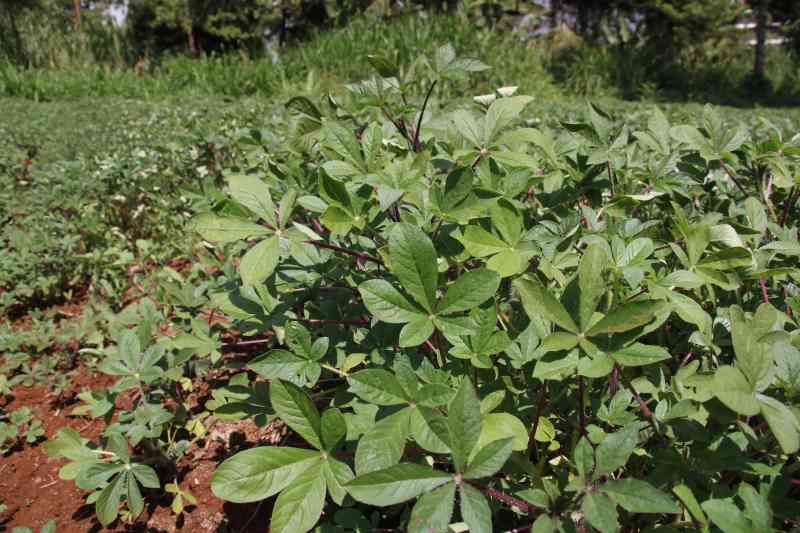Blossom-end rot is a physiological disorder, not a disease prevalent in tomato, squash, pepper, and all other fruiting vegetables. It is easily identified as a brown, leathery rot developing on or near the blossom-end of the fruit. It starts with a dry brown lesion the size of a dime, generally increasing in diameter as the condition worsens.
With time, lesions often become covered with a black mould. Blossom-end rot is caused by calcium deficiency, usually due to fluctuations in water supply. Because calcium is not a highly ‘mobile’ element in the plant, even brief changes in the water supply can cause blossom-end rot.
Droughty soil or damage to the roots from excessive or improper cultivation, restricts water intake and can prevent plants from getting the calcium they need from the soil.
Also, if plants are growing in highly acidic soil or are getting too much water from heavy rain, over-irrigation or high relative humidity, they can develop calcium deficiency and blossom-end rot. Availability of calcium to the plants decreases rapidly as total salts in the soil increase.
Transmission
This disorder does not spread from plant to plant in the field, nor from fruit to fruit in transit. Since it is but physiological, fungicides and insecticides are useless as control measures.
Control
Control of blossom-end rot is dependent upon maintaining adequate supplies of moisture and calcium to the developing fruits. Tomatoes should not be excessively hardened nor too succulent when set in the field. They should be planted in well drained, adequately aerated soils.
Tomatoes planted early in cold soil are likely to develop blossom-end rot on the first fruits, with the severity of the disease often subsiding on fruits set later. Thus, planting tomatoes in warmer soils helps to alleviate the problem.
Keep the soil’s pH at 6.0 to 6.5. Perform a soil test and apply the recommended rate of lime, using dolomitic or high-calcium limestone. Be sure to apply lime two to four months before planting tomatoes. Irrigation must be sufficient to maintain a steady even growth rate of the plants.
Give your plants adequate water. Extreme fluctuations in soil moisture can result in a greater incidence of blossom-end rot. Mulching of the soil is often helpful in maintaining adequate supplies of soil water in times of moisture stress and reduce incidence of blossom-end rot. When cultivation is necessary, it should not be too near the plants nor too deep to injure the roots.
Following soil test recommendations is the best way to fertilise properly. Apply the required amount of fertiliser based on soil test results. Applying too much fertiliser at one time can induce blossom-end rot.
Use fertiliser low in nitrogen, but high in super-phosphate. As a control measure, foliage can be sprayed with calcium chloride solutions. However, extreme caution must be exercised since calcium chloride can be phytotoxic if applied frequently or in excess.
Foliar treatment is not a substitute for proper treatment of the soil to maintain adequate supplies of water and calcium. Spray two or three times a week, beginning when the second fruit clusters are blooming. Spraying calcium is not a substitute for proper irrigation and fertility management.
If you experience severe problems with blossom-end rot, remove the infected fruits. Once a fruit develops blossom-end rot, it will not re-grow or repair the infected area. Leaving the damaged fruit could serve as an entry point for disease-causing bacteria, fungi and insects.
Stay informed. Subscribe to our newsletter
Although differences exist among varieties with respect to susceptibility to blossom end rot, no varieties as yet have commercially useful resistance.
Blossom-end rot should not be confused with fruit abortion or inadequate pollination although the symptoms may appear similar. The onset of blossom-end rot occurs only after the fruit is well on its way to development while insufficient pollination problems terminate the fruit while still quite small.
 The Standard Group Plc is a
multi-media organization with investments in media platforms spanning newspaper
print operations, television, radio broadcasting, digital and online services. The
Standard Group is recognized as a leading multi-media house in Kenya with a key
influence in matters of national and international interest.
The Standard Group Plc is a
multi-media organization with investments in media platforms spanning newspaper
print operations, television, radio broadcasting, digital and online services. The
Standard Group is recognized as a leading multi-media house in Kenya with a key
influence in matters of national and international interest.
 The Standard Group Plc is a
multi-media organization with investments in media platforms spanning newspaper
print operations, television, radio broadcasting, digital and online services. The
Standard Group is recognized as a leading multi-media house in Kenya with a key
influence in matters of national and international interest.
The Standard Group Plc is a
multi-media organization with investments in media platforms spanning newspaper
print operations, television, radio broadcasting, digital and online services. The
Standard Group is recognized as a leading multi-media house in Kenya with a key
influence in matters of national and international interest.








